Note: any filter for use in a simulator with UV output should be stabilized by UV exposure. The order of filter positioning should be considered; highly absorbing filters should be farthest from the source. If UV is not required, then a suitable long pass filter will protect subsequent optics and simplify safety requirements.
Radiation has benign and harmful effects on biological systems. Photosynthesis is obviously of vital importance; other benign effects include the production of vitamin D3, the setting of mood and the circadian rhythms, and the benefits from the mild germicidal bath provided by the sun.
There are many harmful effects of solar radiation on humans, particularly of UV radiation. Skin cancer, cataracts, and loss of skin elasticity, erythema, suppression of the immune system, photokeratitis and conjunctivitis can all result from UV exposure, though in many cases the precise relationship between exposure and effect remains unclear. Simultaneous irradiance with different wavelengths enhances some processes. Understanding how solar radiation effects plant and plankton growth is also important in assessing the results of environmental change.
The action spectrum characterizes the wavelength dependence of a specified biological change. Researchers continue to measure action spectra for important biological processes, leading to better understanding of the effects of irradiation and potential changes due to ozone layer depletion. Knowledge of action spectra helps in the development of protective agents. Action spectra for various detrimental ultraviolet effects were used to compile the maximum recommended exposure graph.
Current research efforts include studies of the relationship between monochromatic and broadband action spectra, and better understanding of photoaddition, photorecovery and the questionable photoaugmentation.
Here we show action spectra for erythema, for carcinogenisis and for DNA changes and photosynthesis inhibition in plant life. All of these spectra peak below 300 nm, but have measurable values through the UVA.
There are several established action spectra for erythema. This is understandable since there is no "standard skin" and measurements indicate that spectra differ depending on the delay from exposure to assessment. Diffey's spectrum has an uncomplicated mathematical formula that simplifies determination of the effective erythemal dose, given the solar or simulator spectrum. We use Diffey's formula to calculate effectiveness spectra for solar UV and our UV simulator. The effectiveness spectra in Figure 8 use Diffey's formula and the sun and simulator spectra from Figure 6. Figure 9 shows wavelengths actually produce erythema, taking into account the action spectrum and the availability of radiation at each wavelength. You can see that the peak effectiveness is at 305 nm for the summer sun. This is the wavelength at which the rapidly rising solar spectrum compensates the falling action spectrum for maximum effect. In the winter, the effectiveness is much reduced and the peak shifted to longer wavelengths.
 Over 8,000 products in-stock! & FREE 2-Day shipping on all web orders!* Learn More FREE T-Shirt with orders $250+ Details
Over 8,000 products in-stock! & FREE 2-Day shipping on all web orders!* Learn More FREE T-Shirt with orders $250+ Details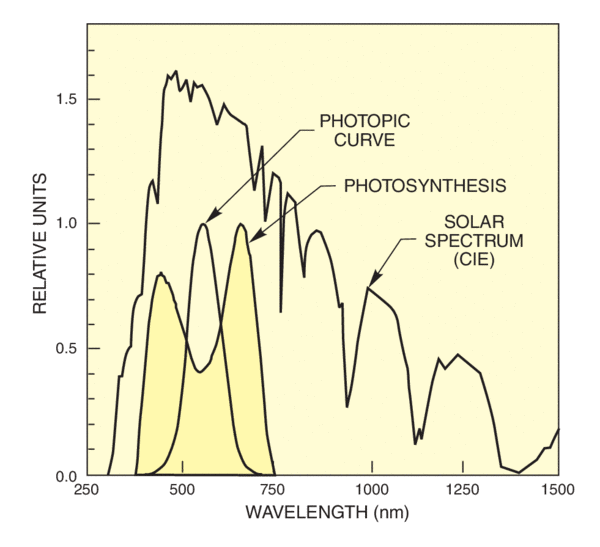

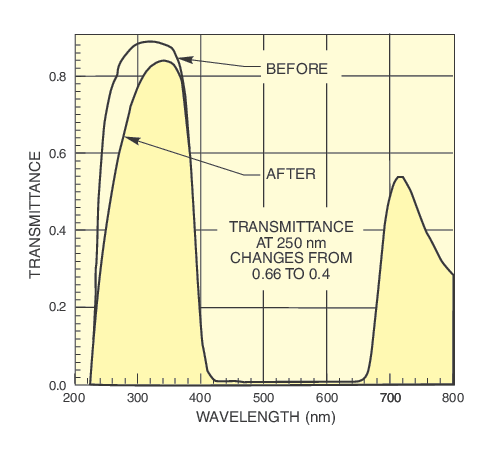
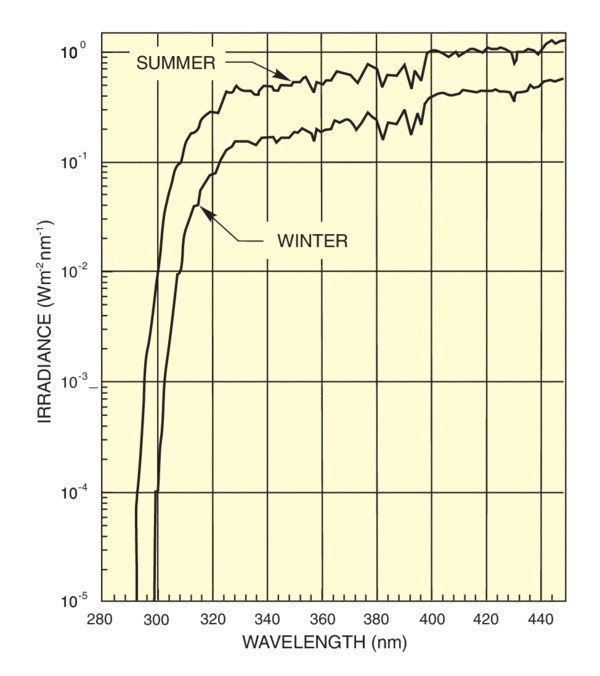
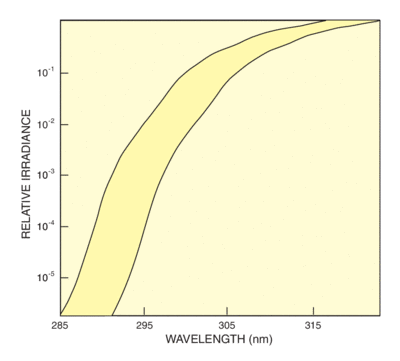
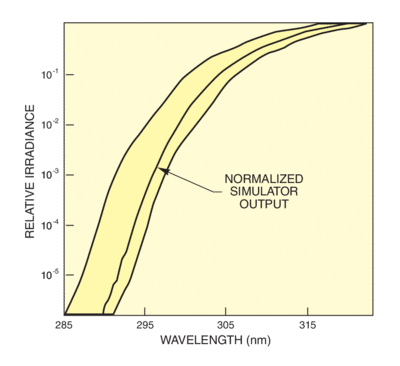
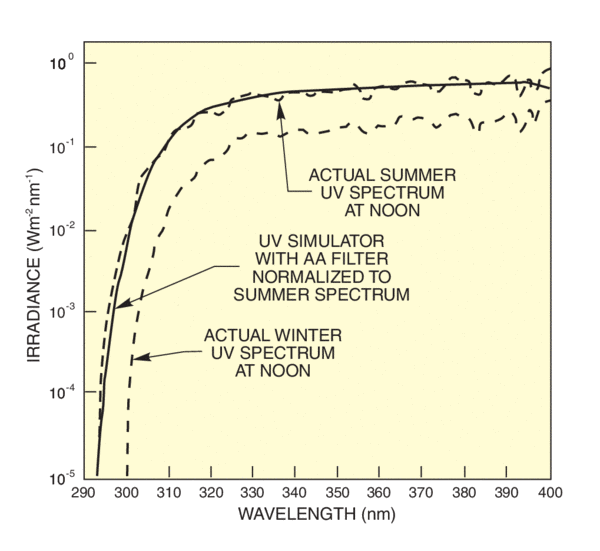
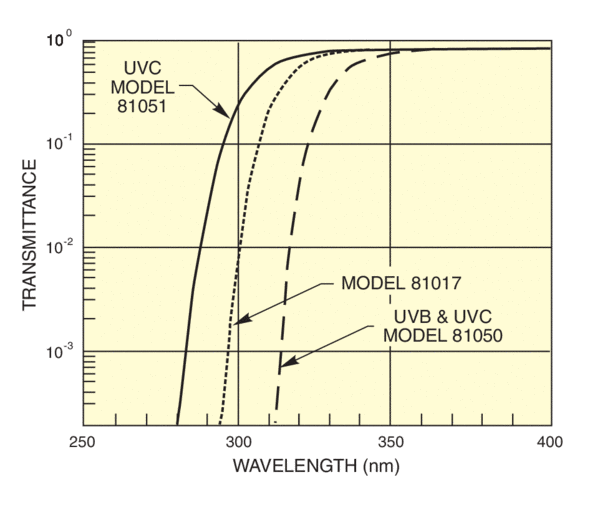
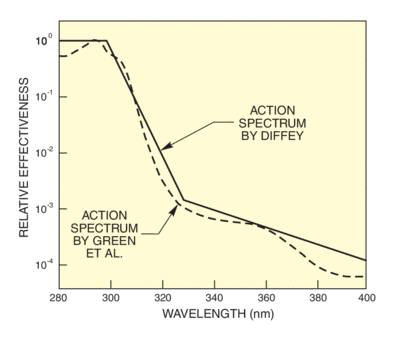
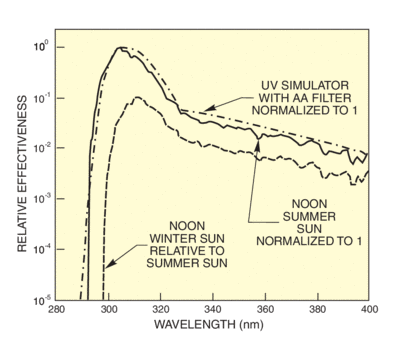
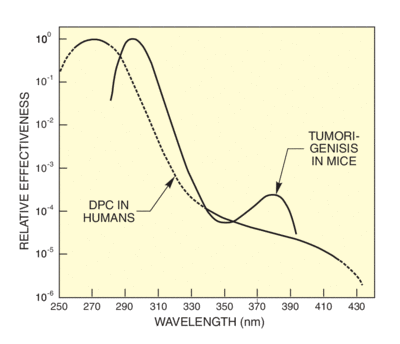
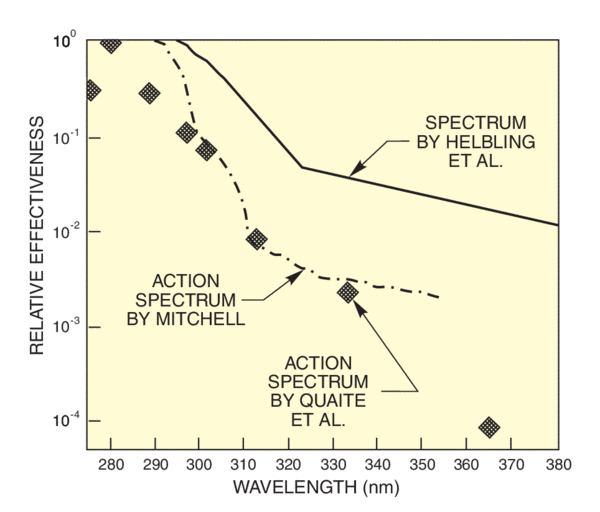
 Ultra-High Velocity
Ultra-High Velocity